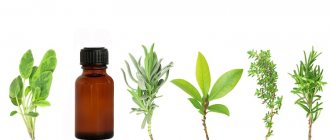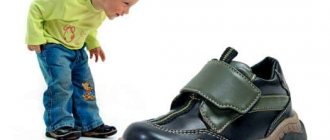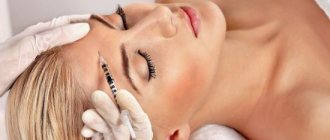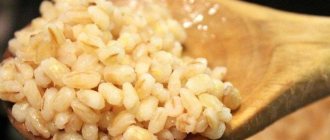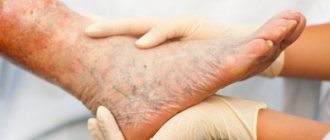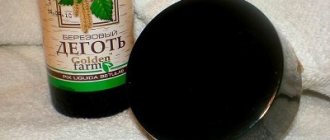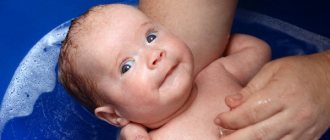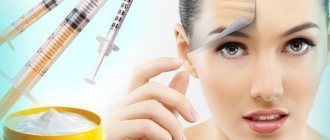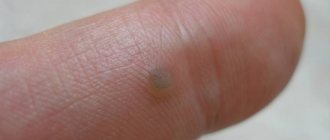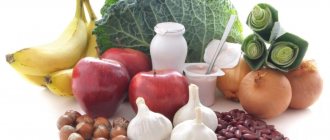Dry eczema is characterized by a long, relapsing course. No one is immune from it, regardless of age and gender. This disease is very unpleasant, although not contagious, and worsens mainly in winter due to a sharp decrease in air humidity.
However, this is only one of the factors that provoke the occurrence of dry eczema; in addition to it, there are a number of external and internal factors that create favorable conditions for the development of the disease.
Causes of dry eczema on hands
Dry eczema on the hands (treatment involves the use of medications) does not occur due to one reason. That is, the appearance is due to a complex of factors. The causes of occurrence are divided into exogenous (external) and endogenous (internal).
The first category includes:
- dry air - this factor especially appears in the winter season;
- temperature changes;
- exposure to harmful substances on the skin - occurs when working in chemical production;
- regular and prolonged skin contact with water;
- use of cosmetics;
- clothing made from synthetic fabrics.
Endogenous factors:
- diseases of the gastrointestinal tract and endocrine system;
- heredity;
- penetration of helminths;
- mental disorders – long-term experiences;
- infectious diseases - an inflammatory process in the body;
- weakened immune system;
- increased sweating.
Types of eczema
In medicine, there are several types of disease. They differ in their causes, symptoms and clinical picture, and treatment methods.
True
Characterized by a variety of symptoms and external manifestations. In the initial stages, it is expressed by the appearance of spots, papules, blisters, and flaky scales on the skin. The rashes are very itchy. Then they rupture, forming erosions and a wet surface. At the last stage, the eczema dries out, turning into a keratinized crust. At all stages of disease progression, severe itching, inflammation and irritation of the affected areas is observed.
With true eczema, the listed symptoms are often observed simultaneously on different parts of the body. The first lesions appear on the face and hands, from where they spread throughout the entire skin.
Seborrheic
This type of eczema is localized on the scalp, forehead, nasolabial folds, interscapular area and other places where a large number of sebaceous glands are located. The boundaries of the lesions are clearly defined and look like pink-red (sometimes with a yellowish tint) spots covered with greasy scales. Over time, they form plaques that spread over the surface of the skin.
The course of the disease is long-term and chronic. Without treatment, complications are often observed and permanent cosmetic defects remain on the skin.
Microbial
Develops under the influence of bacteria. The lesions are often open wounds or ulcers. The onset of the disease is acute, the affected areas are numerous and tend to increase in size. They are localized in most cases on the face, neck, and back of the hands.
Foci of eczema have clearly defined edges with a pronounced stratum corneum. The affected areas are covered with a lamellar crust, under which a continuous surface of the skin is visible. When the disease occurs, the dermis sometimes acquires a bluish-red tint.
Tilotic
It most often develops on the palms and soles of the feet. The affected areas are located symmetrically to each other and are characterized by unclear boundaries. The thick, keratinized crust of tylotic eczema ruptures, forming sheets that reveal areas of exposed, swollen, reddened skin. Occasionally small bubbles form on them.
This type of eczema has a long (up to several years) course. It is characterized by alternating periods of exacerbations and remissions. Tylotic eczema is dangerous because it gradually spreads to healthy skin along large furrows, increasing the affected area. The disease most often affects women aged 45-50 years.
Professional
Occurs due to exposure to external factors. Most often observed in workers who have daily contact with chemical, physical, and mechanical skin irritants. This type of eczema heals quickly and proceeds without complications.
Mycotic
Caused by exposure to microscopic fungi. In external manifestations it is similar to the true one, but the edges of the lesions have sharper outlines. It is difficult to treat and requires qualified medical supervision, therefore it is considered the most dangerous.
Symptoms
Dry eczema can be distinguished from regular eczema. The condition occurs without opening vesicles (bubbles) and wet skin.
The main symptoms of dry eczema:
- dry skin;
- redness of the skin;
- cracks;
- feeling of tightness;
- ulcers;
- constant itching;
- inflammation;
- blisters;
- burning (rare).
If there is no therapy, the skin will crack, but this will cause pain. If the cracks are deep, liquid leaks out of them. If the ichor comes out, the likelihood of penetration of pathogenic microorganisms increases. As a result, purulent ulcers appear.
Stages of disease progression
The disease is divided into several stages:
- I – initial, similar to simple irritation. Dryness and redness appear. Additionally, burning and itching may occur.
- II – the skin is more damaged, bright red rashes appear and grow. But there is no discharge from the wounds, so eczema is called dry. Severe itching occurs, the patient constantly scratches the skin. At this stage there is a high probability of infection.
- III – many cracks form, which look like cracked porcelain. If you do not see a doctor, the skin will crack even more and deeper. At the last stage, fluid comes out of the wounds. When the areas dry out, a red crust will form.
Reviews
Maria:
At the age of 13, eczema appeared on the fingers. The skin was peeling and cracking, I couldn’t sleep at night, I scratched until it bled. We tried moisturizing creams and ointments because we didn’t immediately understand what kind of disease it was. When we became worried, the situation was already advanced, the dermatologist prescribed hormonal ointment. After a few days, the symptoms of dry eczema subsided, but when the treatment was stopped, it all started again. Now, when symptoms worsen, I use a decoction of celandine. I make baths and lotions. So far it helps.
Alexei:
I work at a mineral fertilizer production plant. A year later, I began to notice that my hands were covered with a rash, and sometimes my face suffered in some areas. After the rash - itching and peeling of the skin to ulcers. I went to the doctor. There is only one answer - dry eczema, you need strengthening vitamins and avoid contact with chemicals. Now I always work only in protective clothing. I take Aevit and emollient ointments. So far the eczema has not returned.
Svetlana:
I have been suffering from dry eczema for more than 3 years. It so happened that they did not start treatment in time, now, with a change in climate or season, there is a constant exacerbation. I tried many folk remedies, they helped temporarily. I went to the clinic, was prescribed Sinaflan ointment and strictly followed a diet. I constantly use moisturizers, if there is severe itching, I take Suprastin. A friend also advised me to drink Polysorb, a drug for cleansing the body of toxins. The result is excellent, dry eczema is almost gone, the skin is cleared and peeling has gone away.
Contagiousness of eczema on the hands, routes of transmission
Dry eczema is not contagious in most cases. Despite the fact that the disease is inherited, it is impossible to become infected by wearing clothes of a sick person. But if the patient has an infection, then he can transmit the pathology to someone, but the probability is low.
Infection occurs in a person with a weakened immune system, and if the immune system is normal, the body quickly reacts to the invasion. If the patient notices signs of inflammation, this is not eczema, but a lesion of the skin, so it is necessary to use medications to cope with the symptoms.
Dry eczema is not transmitted through a handshake or close contact with an infected person. Therefore, you should not avoid the person. Many people compare eczema with scabies and think that the disease is transmitted by visiting a swimming pool, sauna, beach, that is, any public place. This is not true, you cannot get eczema this way. The disease is not transmitted through sexual contact.
Features of childhood eczema
In children, the disease most often develops due to a genetic predisposition. Its first sign is redness of certain areas of the skin on the cheeks, elbows, and knees. Over time, the lesions increase in size and spread to the entire face, limbs, and neck. The disease is accompanied by severe itching, which often leads to scratching of the wounds and the transition of dry eczema to weeping.
The disease is treated in children with local remedies to relieve symptoms, antihistamines and hormonal drugs. The child is put on a special diet with maximum limitation of potential allergens, which is maintained after the end of therapy.
Complications and consequences
By consulting a doctor in a timely manner, you can reduce the likelihood of complications and also quickly cope with eczema. After the disease there can be various consequences.
Namely:
- Development of infection. Eczema can occur with an infectious process. Along with cracks, purulent inflammation occurs on the skin. The patient's body temperature increases and severe chills appear.
If dry eczema on the hands is not treated, the wounds may become infected.
- Erythroderma is an inflammatory process that spreads not only to the affected limb, but throughout the body. This condition is the most dangerous of all complications after dry eczema. Therapy is carried out in a hospital setting.
- Aesthetic defects. If not treated in a timely manner, unevenness may form on the skin. Some people don't pay attention to this. But, if defects cause psychological discomfort, it is recommended to consult a psychologist, dermatologist, or cosmetic surgeon.
If the doctor correctly diagnoses and prescribes effective therapy, the prognosis is favorable. But dry eczema can recur if you don't care for your skin properly. Therefore, the patient needs to pay close attention to the skin.
Causes
Numerous reasons can provoke the development of dry eczema. Let's take a closer look at them.
External factors:
- Unsatisfactory environmental conditions, for example, excessively dry air, which negatively affects the condition of the skin. This is why eczema often worsens in winter when central heating is on in living areas.
- Features of the profession. Constant contact with aggressive chemicals in the workplace often leads to allergic reactions, for example, to paints, mortars, etc.
Internal factors:
- Complicated family history. Often the development of eczema is associated with a genetic predisposition to this disease. The pathology can be transmitted from parents who themselves suffer from dermatological problems.
- Infectious agents - bacterial, viral and fungal.
- Metabolic disorders.
- Allergy.
- Diseases of internal organs - gastrointestinal tract, liver and kidneys.
- Psycho-emotional problems. It is known for certain that there is a connection between relapses of eczema and the mental state of the patient. Doctors emphasize that frequent stress and nervous breakdowns contribute to the exacerbation of the disease.
Treatment concept
The treatment regimen may vary, so if you suspect dry eczema, you should consult a dermatologist. Treatment is prescribed individually and varies depending on the stage of the disease. Not all drugs help equally in different situations.
Complex treatment is most often used:
- medicines for internal use;
- taking vitamin complexes;
- external medications – ointments, gels;
- proper nutrition;
- personal hygiene;
- use of cosmetics.
General drug therapy
Dry eczema on the hands (treatment consists of drug therapy) is a disease for which you need to take medications. Popular remedies are listed in the table.
| Group of medicines | Drugs | Action |
| Antibacterial | Ciprofloxacin, Amoxicillin, Tsiprolet, Amoxiclav | Helps fight bacteria |
| Antiallergic | Zyrtec, Zodak, Erius | Remedies reduce itching, inflammation |
| Painkillers and non-steroidal anti-inflammatory drugs (NSAIDs) | Analgin, Parametamol, Nurofen, Ibuprofen, Ketorol, Nise | Medicines reduce pain, inflammation, swelling |
| Sedatives | Motherwort, Valerian, Novo-Passit, Afobazol | Have a calming effect |
| Sorbents | Smecta, Polysorb, Enterosgel | Removes toxins |
| Antifungal | Flucostat, Fluconazole, Clotrimazole | Helps fight fungus |
| Immunomodulators | Immunal, Imudon | Drugs are used for reduced immunity |
In rare cases, a group of corticosteroids is prescribed. But they are dangerous because they weaken the immune system. If you use the products for a long time, the process may be irreversible. At the discretion of the doctor, changes to the list of medications are allowed.
Vitamin therapy
Dry eczema on the hands (treatment involves following a diet) is a condition for the treatment of which it is necessary to take vitamin complexes. The body needs useful substances, so using the products will speed up the healing process.
Lack of vitamins and eczema are 2 interrelated concepts. According to doctors, dermatitis can develop due to a lack of nutrients. Therefore, there is a possibility that dry eczema appeared due to a deficiency of vitamins. There are a large number of vitamin complexes in the pharmacy chain.
Most Popular:
- Supradin.
- Complivit.
- Aevit.
- Centrum.
- Vitrum.
- Alphabet.
- Multi – Tabs.
Local therapy
Local therapy for dry eczema involves the use of ointments, gels, and solutions. The form of the drug and the name are selected individually, taking into account the characteristics of the body and the stage of the disease. Local therapy can speed up recovery. Popular preparations for external use are listed in the table.
| Drug name | Release form | Mode of application | Average cost (in rubles) |
| Dermovate | Cream and ointment | Apply to the affected area 1 – 2 times a day until improvement. Duration of therapy – no more than 4 weeks | 470 |
| Sinaflan | Liniment | First wipe the skin with an antiseptic solution (Miramistin, Chlorhexidine). Apply the drug 2 – 4 times a day. The duration of therapy is from 5 to 10 days. If necessary, treatment can be increased to 25 days | 50 |
| Diprosalik | Ointment | Apply 2 times a day – in the morning and before bedtime | 550 – 650 |
| Flucinar | Ointment and gel | Apply 1 – 2 times a day. The duration of therapy should not be more than 14 days | 280 |
| Elokom | Cream, ointment, lotion | Apply cream and ointment in a thin layer once a day. How to use the lotion: a few drops on the affected area. Dosage – 1 time per day. After application, the product must be gently rubbed in until the liquid disappears from the skin. | 60 |
| Triderm | Cream and ointment | Apply thinly to the affected area 2 times a day. Better in the morning and before bed. The duration of therapy should not be more than 4 weeks | 600 |
| Advantan |
| Apply the drug once a day to the skin. The duration of therapy should not exceed 2.5 months (for all forms of release, except emulsion). Advantan in the form of an emulsion is used for up to 14 days | 500 |
Diet
Dry eczema on the hands is a condition that requires proper nutrition to treat. It is necessary for a person to adhere to a diet constantly.
Nutrition principles:
- Eat in small portions (200 - 300 g) 5 - 6 times a day with breaks of 3 - 4 hours.
- Exclude sweets, flour, and salty foods. It is also not recommended to eat fried or smoked foods.
- Steam, boil or bake food.
- Eat low-fat dairy products, meat (turkey, chicken) and fish (hake).
- Add vegetables and fruits to your diet.
When following a diet, you need to pay attention to your drinking regime. The amount of clean water should not be less than 1.5 liters per day. It is recommended to exclude soda, coffee and strong tea.
Diet for eczema
During treatment, the patient must follow a diet.
The following foods are excluded from the diet:
- smoked meats;
- spicy dishes;
- canned food;
- pickles;
- corn;
- tomatoes;
- eggplant;
- mushrooms;
- nuts;
- citrus;
- chocolate;
- melon, strawberries, wild strawberries, pineapple;
- exotic fruits and berries;
- store-bought sauces;
- poultry meat;
- fish and seafood;
- eggs;
- fresh milk;
- baked goods;
- honey;
- coffee;
- alcoholic drinks.
Limit the consumption of salt, sugar and sweets, tea. The patient's daily menu consists of porridges with water, fermented milk products, soups with vegetable and secondary meat broths. You are allowed to eat lean beef, boiled potatoes, vegetables and herbs, and unhealthy white bread. Baked apples and watermelon are acceptable fruits. Daily drink: water (at least 1.5 l), compotes, natural decoctions.
Features of treatment during pregnancy
Dry eczema on the hands (treatment involves the use of medications) occurs during pregnancy. The main reason for its occurrence is heredity. The condition also appears due to diseases of the gastrointestinal tract and liver, metabolic disorders.
If you suspect dry eczema, a pregnant woman should consult a gynecologist and dermatologist. Treatment has its own characteristics. Therapy for dry eczema during pregnancy involves the use of external medications, diet, and the use of care products.
Treatment is selected individually. The fact is that not all drugs can be used during pregnancy. If the benefit from use outweighs the harm to the fetus, the specialist prescribes the medication. Afloderm, Bepanten, and Ichthyol ointment are most often prescribed.
It must be remembered that dry eczema itself does not harm the fetus. Medicines that are chosen incorrectly have a negative effect.
As a complication after dry eczema during pregnancy, an infection may appear. In this case, therapy will be long and complex, with the use of antibacterial agents. Therefore, the sooner a woman consults a specialist, the easier the condition is to treat.
Differential diagnosis
Since the symptoms of dry eczema manifest themselves clearly, it is not difficult for a dermatologist to visually recognize the disease, and he can do without prescribing a biopsy. The latter is prescribed when any difficulties arise in making a diagnosis.
This disease is similar in its symptoms to other subacute eczematous dermatoses, so in the diagnostic process it is very important to distinguish dry eczema from dermatitis such as:
- atopic;
- irritant contact;
- stagnant;
And exclude or confirm progressive cellulite.
The following are used as differentiation methods for recognizing dry eczema:
- urine and blood tests;
- allergy research;
- linked immunosorbent assay;
- microscopic examination.
Also, as additional measures to identify the disease, the patient may be referred to:
- ultrasonography;
- patch test;
- coprogram;
- serological examination.
Before referring a patient for procedures, the doctor interviews him and collects information for his medical history.
Attention! The sooner the disease is detected, the easier it will be to overcome the disease.
Anti-relapse treatment
After getting rid of dry eczema, you need to take all measures to avoid a recurrence of the condition.
To do this, you must adhere to the following rules:
- avoid contact of the skin with irritating substances - detergents, household chemicals;
- adhere to the doctor's recommendations;
- do not forget about proper nutrition and caring cosmetics;
- wear gloves when performing any housework;
- choose skin care products based on skin type;
- avoid frequent contact with water;
- treat all diseases in a timely manner;
- undergo a full body examination annually;
- sleep at least 8 - 9 hours a day.
Recommendations for treatment and prevention
- Stick to a dairy-vegetable diet, exclude alcohol, smoked, spicy, salty foods, citrus fruits, and eggs from your diet.
- Don't get carried away with water treatments.
- Do not use washing powder or household chemicals.
- Apply bandages to the affected areas, protecting them from sunlight.
- When recovering, on the contrary, you should sunbathe more.
- Make your sleep long.
Eczema is difficult to treat and takes a lot of time, but still, you shouldn’t despair. Take all measures, consult a doctor and always be under his supervision. Together you can choose the right medications and traditional recipes that are suitable for you and cure the disease.
Folk remedies
Folk remedies are of plant origin, and compared to medications, the likelihood of side effects is reduced. The method can be used in conjunction with medications, diet, and caring cosmetics. That is, treatment must be comprehensive. Then folk remedies will be able to speed up healing.
Potato
To prepare, you will need fresh potatoes, which need to be finely grated. Place the product in cheesecloth and squeeze. You should get juice, which is applied to a cloth and applied to the affected area. Duration of use – 15 minutes. Potatoes should be applied 3 times a day.
The cake can be used to treat dry eczema. You need to place it in gauze and apply it as a compress to the affected area. Course – 3 to 4 times a day.
Vegetable oils
You can buy any vegetable oils. Sea buckthorn is best suited as it has a healing effect. But you can use olive and sunflower.
There are the following recipes with oils:
- You need to mix 3 tbsp. vegetable oil, 1 tbsp. soda Add 1 liter of warm water. Stir until you get an emulsion-like mixture. Place your hands in the container for 15 minutes.
- Take 0.3 liters of sunflower oil and 1 tbsp. daisies. Leave for 10 days in a dark place. Filter and apply to the affected area 2 – 3 times a day.
- Mix olive oil and chamomile in a 1:1 ratio. Soak a cotton pad in the mixture and wipe the affected skin surface.
Herbs
As a folk remedy for dry eczema, you can prepare a herbal mixture. To do this, you need to take chamomile, sage and calendula in equal quantities. For example, 1 tbsp. Next, add the mixture to 0.2 liters of hot water. Cool, filter. Soak gauze and apply to the affected area. To improve the effect, you can make this recipe before bed, and also wear gloves over the compress.
Spruce oleoresin ointment
There is Zhivitsa ointment on sale, but you can prepare it yourself.
Components:
- spruce resin - 100 g;
- beeswax – 100 g;
- olive oil – 200 g;
- honey – 2 tbsp;
- propolis – 2 g.
If there is no spruce resin, replacement with any coniferous species is allowed. Cooking does not take long.
First you need to take all the ingredients, except honey and propolis, and place them in a container. Place in a water bath and wait for dissolution (10 minutes).
Add honey, cook the mixture for 12 minutes.
Place the propolis in a container and place in a water bath for another 10 minutes. The ointment should be homogeneous, without unnecessary inclusions (particles). The mixture is cooled and placed in any convenient container. Apply the ointment to the damaged surface 2 – 3 times a day.
Medicine from viburnum
To prepare, take 50 g of viburnum berries, add chopped viburnum and currant leaves. Pour the mixture into 1 liter of hot water and leave for 30 minutes. Soak a gauze bandage and apply to the affected area for 30 minutes. Repeat the procedure 3 – 4 times a day.
There is another way of cooking. You need to smear the pulp from fresh viburnum berries onto the affected area. You can do the bandages before going to bed.
Carrot juice baths
First you need to prepare a sage infusion. To do this, take 50 g of crushed plant herbs and pour 0.5 liters of hot water. Leave for 60 minutes. To prepare, take 50 g of carrot juice and add to the infusion.
Place your hands in the container with the mixture and hold them for 15 – 20 minutes. After the procedure, your fingers should be lubricated with oil or cream of a greasy texture. Duration of use – 14 days. Then take a break of 7 days. Repeat recipe if necessary.
Medicine made from buckwheat flour
Buckwheat needs to be ground or bought in the store with the same name flour. The product must be diluted with water to a paste. Rub the product in 1-2 times a day.
Clay treatment
Clay is considered effective for treating dry eczema. You need to buy blue or white clay, dilute it with water until it looks like sour cream. To improve the effect, it is allowed to add birch tar (1 - 2 drops). Apply the paste to the affected area and wait until it dries.
Once dry eczema is diagnosed, treatment must begin. Therapy should continue until all symptoms disappear. Treatment is prescribed only by a doctor, since a person will not be able to select the necessary medications on his own. Dry eczema on the hands is a condition that brings discomfort to a person. To avoid complications, timely treatment is necessary.
Article design: Mila Friedan
